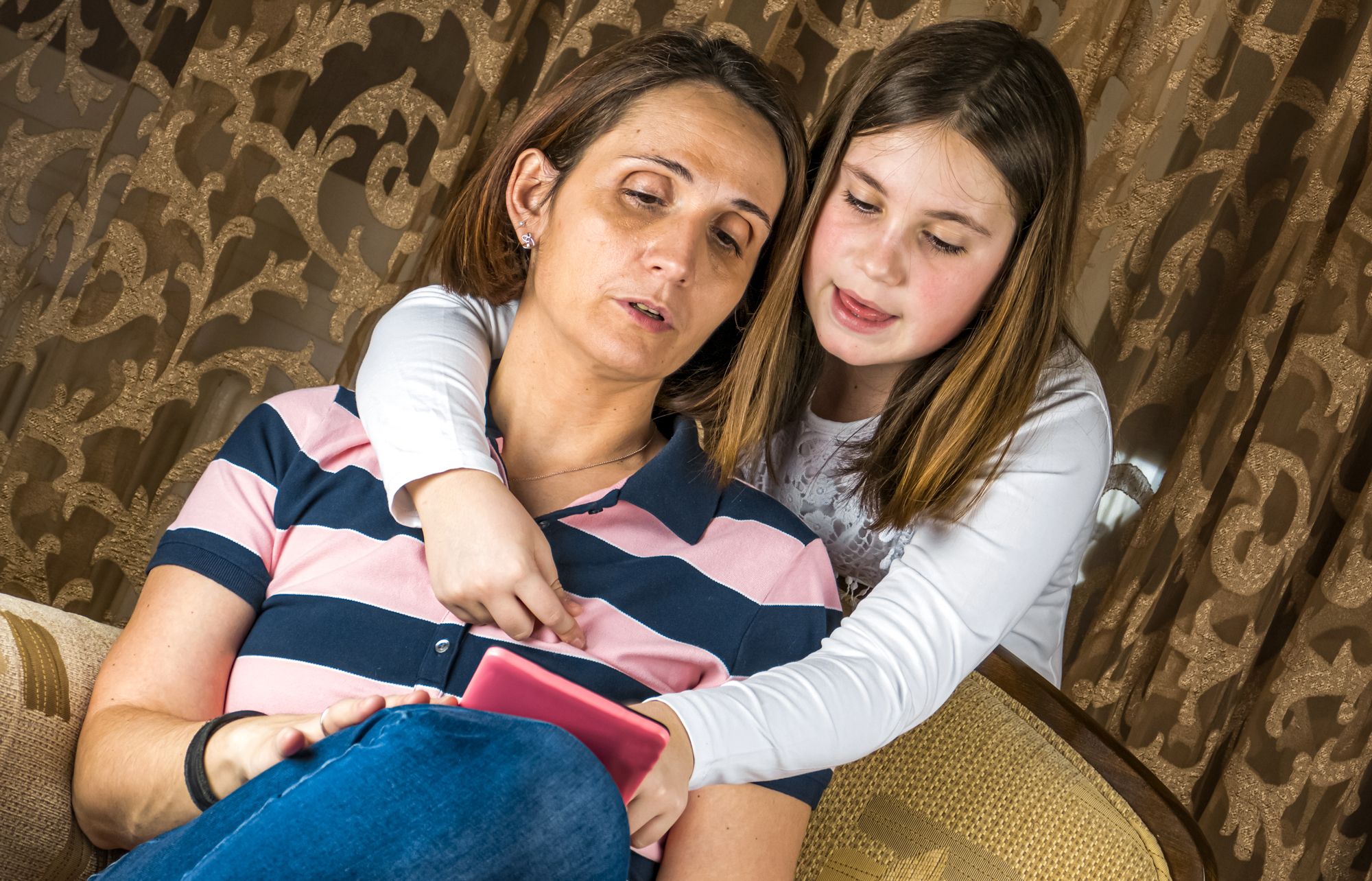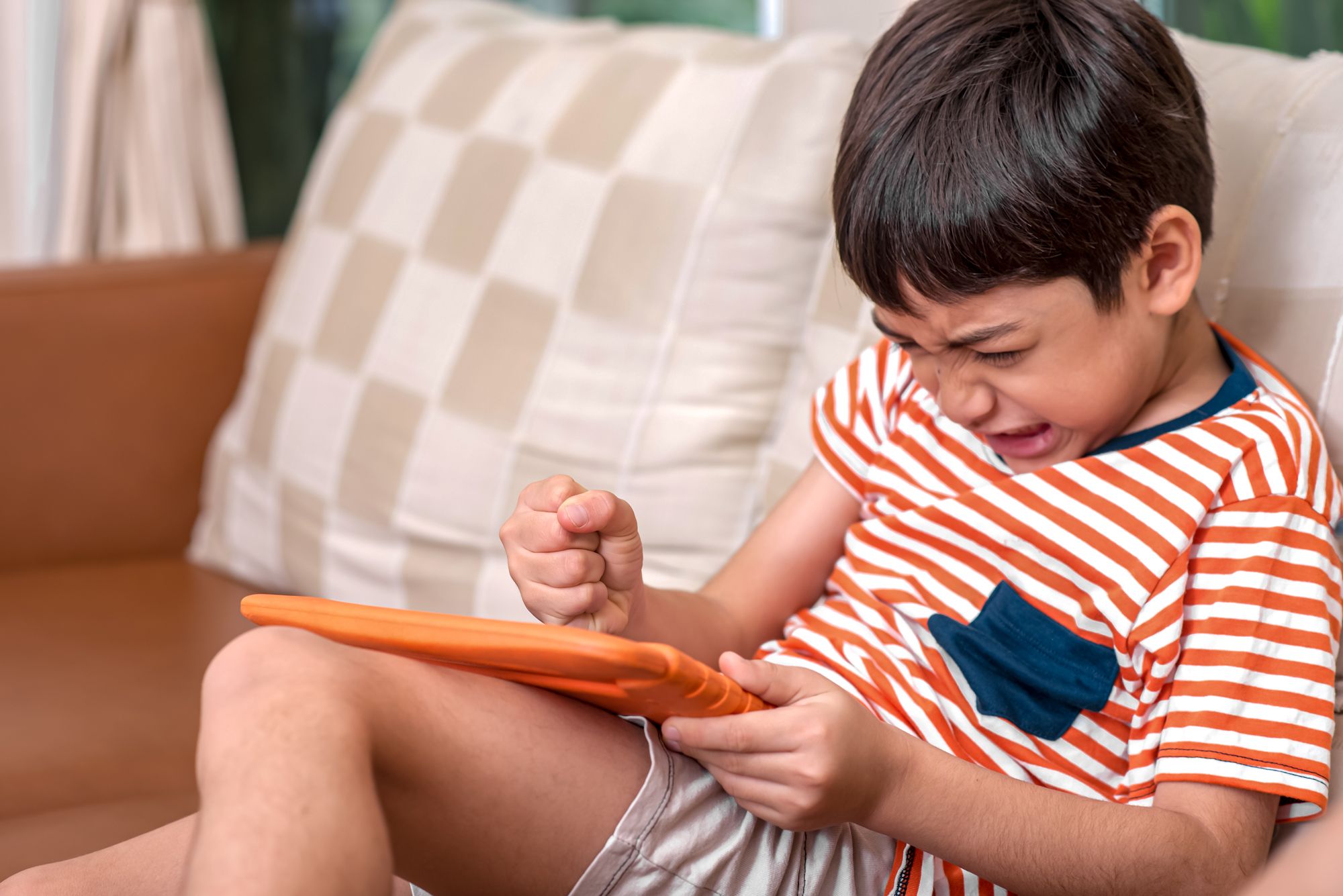12 Effective Expert Methods To Limit Screen Time For Children
When becoming a parent, or babysitting other people's children, you'll notice family screen time conversations occur often. Opinions on healthy screen time exposure for kids can vary, especially among different age groups, but what's clear among experts, is the consensus that the younger the child, the less screen time they should be getting.

How much screen time is too much for kids?
According to AAP’s guidelines, released in October 2016, it’s best to limit screen time to a 1 hour per day program (or programs), that's high-quality and educational, for children between the ages of 2 and 5 years. With an exception of video calling, avoid the use of screen media for children younger than 18 months. If you choose to introduce media to children between 18 - 24 months, find high-quality programming and ensure you co-view and co-play with the child, during this time. Use consistent rules and restrictions for older kids. More on this further down this article.
As too much screen time can be harmful to a child's development, you must set boundaries from birth. As the home is where many screen time problems start, many parents focus here first. Thankfully, there are proven methods to reduce screen time for children.
Read on to explore our expert tips and recommendations, a guide on the why’s and how’s of reducing screen time for children!
Why is it important to reduce screen time for children?

Screen time impacts young children the most, so if you’re new to parenting, know that it's important to limit from the beginning. According to The Journal of the American Academy of Pediatrics, children younger than 2 years old require a combination of social interaction with their caregivers and hands-on exploration to develop their cognitive, language, motor, and social-emotional skills.
Digital media isn't beneficial to toddlers - unless caregivers translate what toddlers are learning into real life (from age 15 months), by reteaching common concepts. This helps kids learn a few things, despite the fact that their memories and attentional skills are still developing.
Too much screen time can hinder your child’s development

Excessive screen time can cause delays in the development of young children in areas including language, cognitive development, and other social and emotional areas. These delays are confirmed by several population-oriented studies, strongly tying each factor to low parent-child interaction when the TV is on.
But what are the symptoms of too much screen time? The impact of screen time depends on how early a child is introduced to it, time spent watching, and what they watch. Generally, positive and educational material produces better child behavior. Note too that inappropriate content can lead to behavioral problems in children, and in some cases, physical aggression later in life.
According to The Journal of The American Academy of Pediatrics, infants and toddlers with self-regulation problems and a difficult temperament are more likely to consume more media. These underdeveloped toddlers are often given mobile devices as calming mechanisms, which normally does't improve long-term behavior.
Too much screen time can adversely affect your child’s sleep

Too much screen time or even the presence of a television, computer, or mobile device in the bedroom has been linked to less sleep every night. This significantly affects infants, as when they’re exposed to screens near bedtime many parents report their kids getting notably less sleep.
Research indicates that the blue light emitting from screens can cause the suppression of endogenous melatonin, a hormone that opens the “sleep gate” and is responsible for reinforcing other physiologic functions at night. The Journal of Sleep Medicine Reviews through Science Direct also confirms screen time's connection to delayed sleep and shortened sleep, showing limiting exposure before bedtime is crucial.
Too much screen time is related to childhood obesity

Did you know that BMI increases for every hour that preschoolers use digital media? According to The Journal of the American Academy of Pediatrics the increase is small, but is cumulative in the long-term, and was recently proven in a study involving 2-year-olds. The increase is associated with screen time in combination with eating and exposure to food-related advertising.
Watching media and eating also lessens attention to feelings of being full, causing children to eat more, during use. This effect often leads to weight gain as children grow, increasing obesity risk.
Key takeaway: Reducing a child’s screen time positively impacts their sleep and cognitive development. While an increase in screen time can lead to behavioral problems, stunted social skills, and higher risks of obesity.
Expert tips and habits to help reduce your child’s daily screen time
When it comes to setting screen time limits, it can be hard to determine which methods will work best for your kids. Perhaps you've tried a few strategies already but haven’t been able to stick to them or have no idea where to start. If you’re wondering how to limit screen time, we’re here to help. We reached out to parenting experts and compiled a list of 12 tips that should make it easier to reduce screen time:
1. Set an example and reduce your own screen time
2. Spend time playing with your kids
3. Encourage activities that do not require screen time
4. Encourage independent play
5. Restrict access to devices, especially before bedtimes
6. Be consistent and turn off devices when not in use
7. Don’t make screen time a reward or a punishment
8. Have your kid’s friends over more frequently
9. Use family meals and car rides as bonding time
10. Talk to your kids about the dangers of too much screen time
11. Require your child to say why they want to use a device
12. Take your time to introduce technology
1. Reduce your own screen time to set an example of healthy use

Children mirror what they see more than they pay attention to what you’re telling them to do. That means, if they see you binge-watching your favorite shows, they’re going to take cues from you. In as much as watching your weekly shows may be your way of defusing, try not to watch them with your children around at least – this helps you set a good example that they can follow. Also, avoid keeping the TV on when no one is watching it, or scrolling through your phone endlessly, as this can reinforce bad habits in children. Try reading instead, to get your children into activities which will be useful for their development. The Journal of Applied Developmental Psychology notes that child screen time patterns are “highly influenced by parental attitudes”, which means parents need to be very cautious about setting bad habits that will be hard to break down the line.
Key takeaway: Reduce the amount of time you watch TV and use your phone, when your children are around.
2. Spend time playing with your kids

Children love playing with their parents, especially younger kids. They won’t be so interested in screen time if you’re down on the floor playing with their toys with them and teaching them new things. This will take some creativity and a stretch of your imagination, as well as dedicated time, but you’ll be glad when they hit their teens and still want to include you in some of the things that they do.
In terms of setting the stage for a fun playdate with your child, Bert Anderson from “Me Before Mom” says the following:
“Not only does [20 minutes of child-led play with at least one parent] fill up your child’s need for attention, but it lets them feel like they’re in charge without it being too risky. You’ll want to do whatever your child wants to do. If this means running around the house pretending to be trains from Thomas the Tank Engine that’s what you do. They say to do this, 20 minutes a day because, especially if you’re working, even a half hour can feel overwhelming. The average attention span for most people is 20 minutes. You’ll be surprised by how willing your child is to play independently if you take the time to be with them one-on-one.”
Read more on Bert’s treasure trove of a website which is dedicated to moms.
Bert Anderson from “Me Before Mom” also says, “Don't be afraid of using things like play dough and Moonsand. I know the cleanup can be really annoying but the sensory action children get when they play with their hands to create things is mesmerizing. I live in Minnesota and this is my go-to when it’s below zero and the kids can’t play outside.”
Jenny Silverstone from “Moms Loves Best” shares similar thoughts on just getting right in there and keeping things moving with your kids, instead of letting them stare at a screen. “Encourage them to go for a walk with you or challenge them to a basketball game in your driveway or at your local park,” she writes on her blog. “If they’re active, they’ll be engaged in what they’re doing. They’ll be less likely to complain, and you’ll both benefit from the increased activity.”
Key takeaway: Spend 20-minutes of child-led play a day.
3. Encourage activities that do not require screen time

The goal here is finding ways to get your kids to have less screen time and keeping it that way, if you’ve already implemented screen time rules in your household. More than just laying down the law, it is integral to the success of your mission to provide alternatives to the lure of digital media for your kids. Think board games, books, art projects (which requires getting out there and getting supplies), sports and more. There really is no limit to this, but you’re best off working with things your kids already like to do or want to learn. This helps so that when you make the decision to limit screen time for more beneficial hobbies, there’s less pushback as there’s at least an inkling of interest in the opposite way. Explain to your children why you’ve made the decision, which can help them stick to it, perhaps even for the long term.
The second part of this is to extend the screen time rules to your entire household. Try implementing unplugged hours where everyone disconnects from their devices. This means no TV, video games, computers, phones, or any other digital devices. Some people do this at dinner time, or an hour before or after. You can fit some of your non-digital activities in at this time which you can all enjoy as a family.
The takeaway from all of this is that parents have a significant role to play in setting boundaries for their children, whether in relation to screen time or otherwise. Your encouragement and support will go a long way in the interactions between you and your kids, and positively affect their developmental journeys ahead.
Key takeaways: Provide alternatives like board games, books, art projects and sports. Try implementing unplugged hours for the entire household around dinner time.
4. Encourage independent play

Life can be tough for a parent, especially a single parent. Regardless of your family dynamic, it is likely that screen time comes into play when you need a few minutes to get something done, or just some time to recalibrate. What if there was a way to achieve this without encouraging more screen time? You’ll be happy to know there is, and it’s called independent play.
Now this may take a bit of practice, but it is totally possible to even get younger kids into playing on their own. At first there may be some protesting, but if they have fun things to do, most kids won’t mind playing on their own for a few minutes. You can introduce this gradually if it’s new to your parent child dynamic.
Start with 10 minutes at a time and encourage them to do this while you’re in the room with them. You can add more time to this slowly, which gives them time to gain confidence and be comfortable. When you’re just starting off, it’s important to communicate with your child – don’t get mad if there’s push back. Reassure them that everything is alright, inform them gently of what you’re doing or need to do, and that you will get time to play together later. Validation of their feelings is important. Be sure to keep the promise to play with them later.
Some parents find it beneficial to encourage independent play daily at the same time. You can choose to do this just before or after nap time with toddlers, or just after breakfast with slightly older kids. Before letting them get into independent play, it will help giving them your undivided attention first which allows for optimal emotional support!
Key takeaway: Practice independent play and reassure your child that you will play with them later.
5. Restrict access to devices, especially before bedtimes

Create a schedule and set rules that relate to how much screen time kids have per day, and what time works best for everyone. This is especially effective for older kids.
Scarlet Paolicchi from “Family Focus Blog” says: “My first suggestion would be to create a schedule, so your children know what to expect. Don’t open their eyes to the possibility of anytime entertainment anywhere. If they watch a certain cartoon, like Martha Speaks, at a certain time every day, they will get into that routine. Then turn it off right on time so they get in that routine too.”
In the event that resistance is encountered, Family Focus’s Scarlet says, “Try to help them transition into the next activity. “Let’s read a book now.” “Let’s see who can build the tallest block tower.”
Jacinda Boneau from “Pretty Prudent” believes that it is important to include rules like “no electronics before 10 AM” and “a total daily electronics limit of 2 hours.” Even if they don’t want screen time, they should have to complete their checklist for the day.
Brianne Manz from “Stroller in the City” tells us more about how technology can help setting limits: “My husband and I have an app called “Screen Time” on our phones where we can control their screen times. We set limits (only 45 minutes a day) for them, and once that 45 minutes is up, their phones automatically turn off. If they used all of their 45 mins in one sitting, they won’t receive more time, so it’s also giving them a chance to set their own limits as well and spread out the time they use.”
Janel Case from “A Moms Take” notes the importance of everyone being on the same page about family tech. “Let your children help you set the rules, expectations, and any tasks that would need to be accomplished before they can use their preferred device. This way, everyone gets to add their input on total device time, jobs they’re able to complete, and they take on ownership of the household rules around technology use. It’s worked wonders in our home with four boys ages 5-13.”
Key takeaway: Create a schedule to restrict access to devices and let your children help you set the rules.
6. Be consistent

Jenny Silversttone from “Mom Loves Best” says, “If your child understands that they have one hour of screen time per day and that’s it, they’ll fight you less than if you sometimes waver on it. If they sense they can get you to bend on your rule, they’re going to have no respect for it, and they’ll fight you on it when you do try to enforce it.”
Other general guidelines for enforcing household screen time limits are turning off televisions and other devices when not in use or finding suitable television viewing windows for kids. Enforce the rules but show them that there is still room for fun and a little screen time if they corporate.
If your children are between the ages of 2 and 5 years, 1 hour of screen time a day will do – find something educational and fun that you can watch together. Explain how the different things they see relate to real life and point out items or characters they may already be familiar with. For children 18 to 24 months old, digital media use should not be encouraged (video chat excluded, e.g. with grandparents).
Do not encourage screen time 1 hour or less before bedtime. Also ensure that you take the devices out of your children’s rooms before bed.
Televisions in bedrooms should not be part of your household structure if you want to decrease screen time overall. Kids should not have TVs in their bedrooms, and neither should you.
Key takeaway: Be consistent, turn off devices when not in use and limit screen time 1 hour or less before bedtime.
7. Don’t make screen time a reward or a punishment

Placing screen time on a pedestal to the point that it is likened to a reward or punishment is a sure recipe to make it seem even more important to children. Avoid doing things like allowing kids to earn more screen time as a reward, and instead stick to your previously established limits. If you must, use other types of rewards, like one that do not involve screen time. This will allow you to pat your kids on the back for good behavior or other commendable actions.
Just as kids need to be encouraged to learn the importance of moderation, so too do parents need to realize that there are other ways to calm children than using media. Admittedly, media can be useful if you’re at an airport or on a plane, or at a doctor’s office, etc., when you really need kids to be calm quickly. Consistently using this technique however will get kids used to this, and possibly only this as a soothing mechanism, which can make it difficult for you to set limits in the future.
Using screen time as a regular calming mechanism can also create delays in your kids learning to regulate their own emotions and behaviors. Speak to your pediatrician who can help you find a strategy that works for you and your family.
Key takeaway: Avoid rewarding children with screen time, it will make it seem even more important.
8. Have your kid’s friends over more frequently

What better way to minimize screen time than to have some of the people they feel the need to be constantly connected to come over to play at your house? This works the other way around too, but in that case, you’ll need to be on the same page with other parents on matters relating to screen time. Having friends over increases the chance that they’ll get into more interactive and physical play, maybe even going outside to get some sunshine if the weather is good. Spending time with friends outside of school will also allow them to build better bonds with their friends and socialize on a different level.
Jenny Silverstone from “Mom Loves Best” says, “Depending upon their age, your children may be using their screen time to talk with their friends. They may have real fears about becoming socially isolated from the lack of screen time. To keep them from feeling like an outcast, have them invite their friends over more. You can arrange something for them to do where screens aren’t involved.”
Visit Mom Loves Best for more useful tidbits on increasing social interactions with friends to reduce your kids’ screen time.
Key takeaway: Have your child’s friends over more often.
9. Trust in the importance of family meals and car rides

Eating as a family is a proven way to strengthen familial bonds. Kids who eat with their families on a regular basis are more likely to get involved in family discussions, and communicate in general, than those who do not. It also helps to keep the television off during mealtime, though two-thirds of people (64%) admit this is not the case in their homes.
Car rides are the next best option, as this is a shared time that should be valued for communication opportunities and closeness. If you want to encourage more conversation during mealtime consider removing the TV from the eating area, or simply turning it off when everyone sits down to eat.
Research has found that families who eat together are more inclined to eat healthier than those who do not. If you make eating together a priority and schedule family mealtime at least two or three times a week, you really can see improvements in family interactions, and even encourage better health through more nutritious eating habits.
Key takeaway: Use family meals and car rides as bonding time and turn off all screens.
10. Talk to your kids about the dangers of too much screen time

If you don’t speak to your kids about the issues that can arise from excessive screen time, chances are they’re not going to take the initiative, or know how to figure it out for themselves. Coming to such a profound realization isn’t even really an option for younger kids, but you can start educating and encouraging your kids from early on to do other things aside from watching TV and engrossing themselves in digital media.
Once your kids are able to understand the benefits of limiting screen time, they’re likely to cooperate with you more than kids who think you just don’t want them to watch as a means of punishment. You can explain to your kids in terms that they can understand, like about movies that aren’t age appropriate, about violent video games, and how inappropriate images can negatively affect or be harmful to children. Tell them about the reality of online predators and schemes, and how you can all work as a unit to avoid them being placed at risk.
Key takeaway: Explain to your kids the dangers of too much screen time and they’ll be more likely to cooperate.
11. Require your child to say why they want to use a device, before use

Asking your kids why they want to use a particular device when they ask to use it can really get them thinking. They may just want to use it because they’re bored or out of habit, or there might be a more creative reason behind their request, like perhaps they want to make a movie or play an active video game.
Most parents would be more inclined to say yes if the reason their kids are asking for screen time isn’t simply because they are bored. If you ask why, then you can redirect their interest if they’re just looking for something fun to do. You can even expand this into a conversation about why people gravitate to the use of screens, and what they like about it.
Listening to their answers which will help you learn more about their interests, which they will appreciate. This will also open the gateway to them being more comfortable talking with you later about other digital happenings they may be unsure, or uncomfortable with. This method is most useful for older kids, though you can get your younger ones into the habit of being more mindful of their screen time.
Keep in mind that even if you’re asking your kids what they’re doing on their devices, it is still your responsibility to monitor what apps they’re using or have downloaded, and other media content they may be watching. Go further and even try out some of the apps before they use them and get involved intermittently during screen time. Ask them to share their views on the new apps, that way you can decide together whether it’s something that’s going to be beneficial to them.
Tip: As a parent, challenge yourself and ask why when you’re about to glance into your phone or focus your attention on another electronic device.
Key takeaway: Try to understand why your child wants to use a device by asking them before they use it. This will make them more mindful about using the device.
12. Take your time to introduce technology

Your kids will figure it out when they need to. As it relates to children aged 18 months to 24 months, the most important thing is to avoid solo media use. Watch with your child in the time that you allocate, if you must. Choose programming which will enrich them, that you can infuse into their day-to-day interactions. For younger children, the general rule is that you avoid programs that are fast-paced, apps with content that is too distracting, and anything with violence.
Key takeaway: Avoid rewarding children with screen time, it will make it seem even more important.
Do not give into the fear

If you take pity on your kids, whose lives will suddenly appear to be “falling apart” with screen time restrictions, your entire plan will go up in smoke. Once your kids see that there are gaps in your resolve, they may not immediately respect the new boundaries, so it’s important for you to be firm and steadfast in your stance from the very start. Here are some of the things you can expect once you make the announcement of screen time adjustments:
You may be made to feel like the least understanding parent on the planet. How dare you take away their ability to compare notes with friends on their favorite shows now that they can only watch one show per day? The counter argument for this is that they can now focus on the things in life that are more important and even lead conversations on current events and other local happenings (for older kids) that they may have discussed with you at the dinner table.
Keep an eye on how things change with how your kid behaves

As with everything that must be tried and tested, watch for the progress. Television and video games both have a notable impact on your child’s behavior, so expect to see an undoing of sorts as the weeks and months progress with limited screen time. Many parents notice that their children are more irritable, impatient and even aggressive and selfish when they’ve had an overdose of digital media. This behavioral change is hard to miss, and the consensus is that when you spot it, you’ll be less willing to let your kids make their own rules when it comes to screen time. Once you’ve made the rules, stick to them to see positive results for your family. Keep monitoring the changes in behavior over time to ensure they’re sticking to it.
If all else fails…

If you’ve tried it all and nothing works and are considering making a drastic move like cutting your cable/satellite television feed, or getting rid of your TV, do it. As this is often a sudden move, it will take a bit of adjustment (and explaining to older kids) but this is a quick and absolute way of dealing with the problem of too much screen time. Your family time and interactions will be very different after this (certainly more interactive), and your kids will thank you later.
Unplug at Beaches Resorts
Picture: Everything you can possibly imagine is beachside at Beaches Negril.
Beaches Resorts is a family-oriented all-inclusive resort company boasting three luxury resorts across Jamaica and The Turks & Caicos. Less than a two hour flight from U.S. shores, Beaches Resorts are all located on a dreamy Caribbean beach and feature spectacular Pirates Island water parks. With kids' programs for all ages, Sesame Street parades, magic shows, treasure hunts, beach soccer, boat trips, reggae jam sessions, water sports and much much more - your kids will be happy to leave their devices turned off and make new friendships that last.
For an all-inclusive vacation your kids will talk about for years to come, check out Beaches Turks & Caicos, Beaches Negril and Beaches Ocho Rios. Food and drinks are always included, always unlimited.

